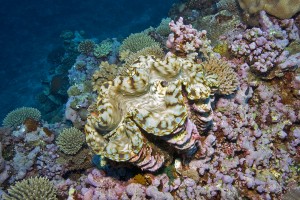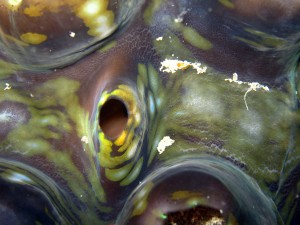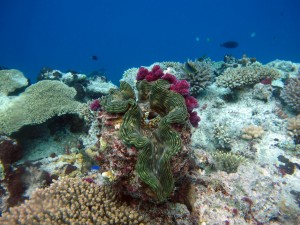For those of you who have never seen a giant clam, let me tell you they are incredible creatures. I’m intrigued by these enormous, marble-colored flesh animals. Their size alone is impressive with potential to grow up to almost 5 feet (1.5 m) and weigh upwards of 440 pounds (200 kg). Not to mention, some have a lifespan of over 100 years.
Due to their immobility, giant clams must filter feed. They siphon hundreds of gallons of water per day removing plankton and organic matter. Like corals, they have a symbiotic relationship with zooxanthellae (algae) that live in the mantle (fleshy part) of the clam. The algae photosynthesize providing an added food source.
There are ten species of giant clams in the Indo-Pacific. Sadly, Tridacna gigas, the largest giant clam, was believed to be extinct in Fiji due to overharvesting. They were harvested for the shell and aquaria trade as well as consumption. The good news is that in 2000 the Fiji Department of Fisheries started a giant clam reintroduction program, not only with T. gigas, but other threatened or endangered giant clams as well.
Today, giant clams are protected under the Fiji Fisheries Act that prohibits the export of giant clam meat. Internationally, the Convention on International Trade in Endangered Species (CITES) also protects these clams. By educating the general public, reintroducing giant clams, and enforcing stricter harvesting laws, there is hope for these magnificent creatures yet.
Stayed tuned for more information about giant clams
(Photos/Images by:1 Ken Marks, 2,3 Stacy Jupiter)
To follow along and see more photos, please visit us on Facebook!


